Repairing the Mistake of I-277
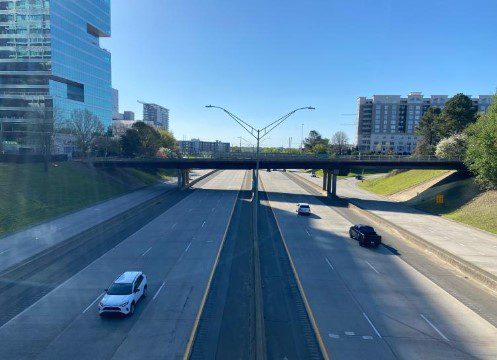
Editor’s Note: This article is the first in a series of guest contributors considering the question, “What small tweak or large shift would you make in 2023 that would catalyze sustainable growth and ensure equitable wellbeing in our region?”
The construction of I-277 was a failed urban renewal ploy during the mid to late 20th century. It was one that tore apart some of the most dense and Black neighborhoods of Charlotte. Many cities are finally starting to realize their urban freeways were a mistake and putting forth efforts to remove them. For the first time ever, the federal government is even offering aid aimed at helping reconnect communities.
As with most large cities, Charlotte is experiencing an affordability crisis. When combined with the sprawling nature of the region, many people are left doubting the sustainability of the future. Removing portions of the freeway while mitigating the impacts of the rest could go a long way in not only repairing the damage of the past but also restoring faith in an equitable, sustainable future.
Currently, the footprint of I-277 encompasses roughly 300 acres of urban land. 175 of those acres are the South and East segments which make the most logical parts for removal.
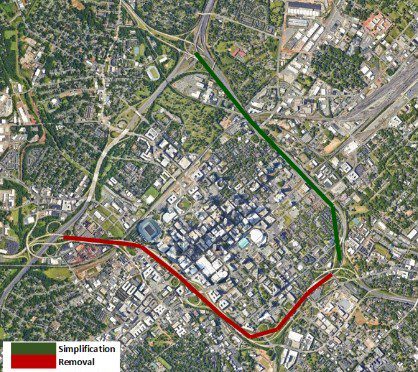
Sections of I-277 to be removed or simplified. GoogleEarth
There are several options to make use of the reclaimed land by removing the interstate, all of which would help lead Charlotte in the right direction.
Option One: Urban Boulevard in the place of I-277
Transforming the freeway into an urban boulevard in its place may not seem like a big deal on the surface. Once the shoulders, embankments and right of way are considered, I-277 takes up around 300 feet of space. At the interchanges, this balloons up to 900 feet wide in places.
An urban boulevard would still allow for seamless vehicular access while also serving as a multimodal hub complete with safe pedestrian, bicycle, and transit facilities.
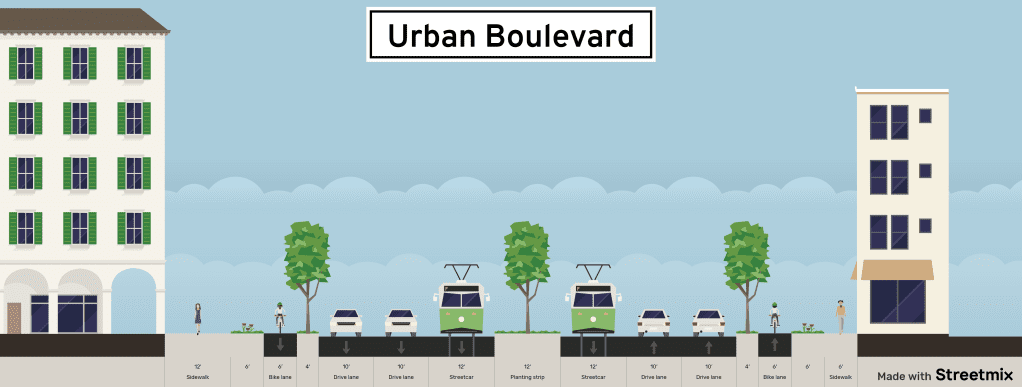
StreetMix rendering of a potential urban boulevard configuration
Even with two travel lanes, a transit lane, medians, street trees, protected bike lanes and wide sidewalks, there would still at least 250’ of newly created frontage for development. Given the prime urban location, development should be constructed as car-light or car-free in nature. With the location, there is also the potential for intense density and smaller housing units which opens the door for a large component of affordable and workforce housing types. These factors combined with the number of residents that would not be forced to drive in from the suburbs are a huge sustainability and equity win.
Option Two: Linear Park and Elizabeth Park Expansion
Uptown currently lacks a large urban greenspace. Using the footprint of the removed sections of I-277 gives the opportunity to add a ring of linear parks that would frame the picture-perfect skyline.

Potential footprint of the linear park and expansion of Elizabeth Park – GoogleEarth
One of the biggest complaints against allowing neighborhoods to densify is the lack of greenspace within walking distance. Elizabeth Park sits just to the East of I-277 in Uptown but falls short of its potential due to being hemmed-in by the freeway. But with the freeway gone, it will serve as a gateway from the Eastern neighborhoods and provide the opportunity for continued incremental density.
As South End continues its boom, there will be a need for increased greenspace accessible to there as well.
Option Three: Grid Reconnection
It’s like the highway was never there, right? Not exactly. We could never replace the communities, relationships and neighborhoods that were severed by I-277. But the grid restoration would be a massive step in the right direction.
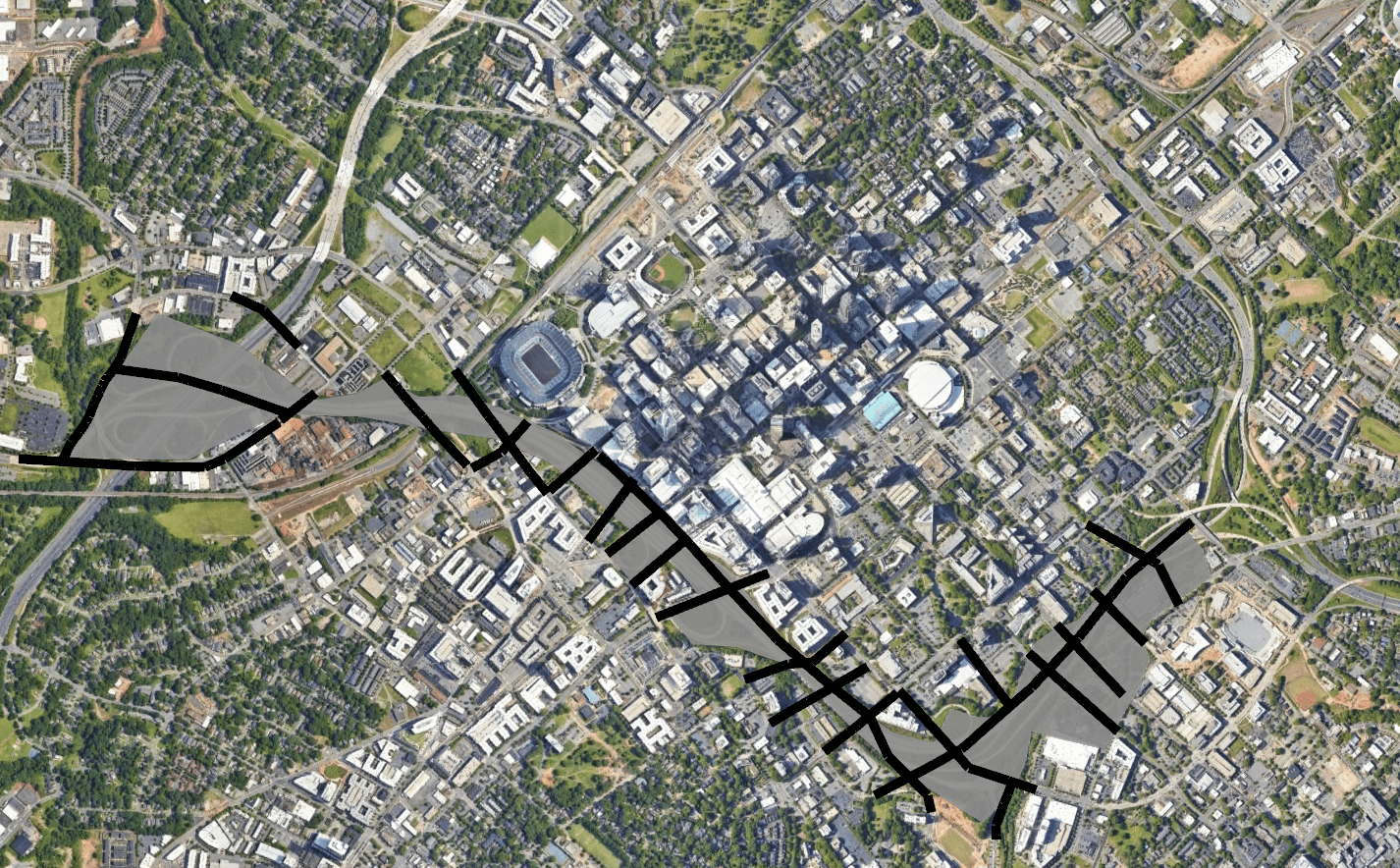
Rendering of potential new grid structure with the removal of I-277 – GoogleEarth
Much like the urban boulevard option, 100s of acres of land would be opened for dense development opportunities located in a prime location for car-free living. Coupled with the countless new connections to the surrounding neighborhoods would make the city feel whole and connected once again.
North Segment Simplification
Retaining the Northern segment maintains direct access between I-77, I-85 and Independence Blvd and would likely be seen as necessary to keep by officials. However, steps can be taken to mitigate the impact on Uptown as well as improving the safety of the facility. Several of the on and off ramps should be removed, a small capped park constructed, as well as two-waying of the frontage roads.
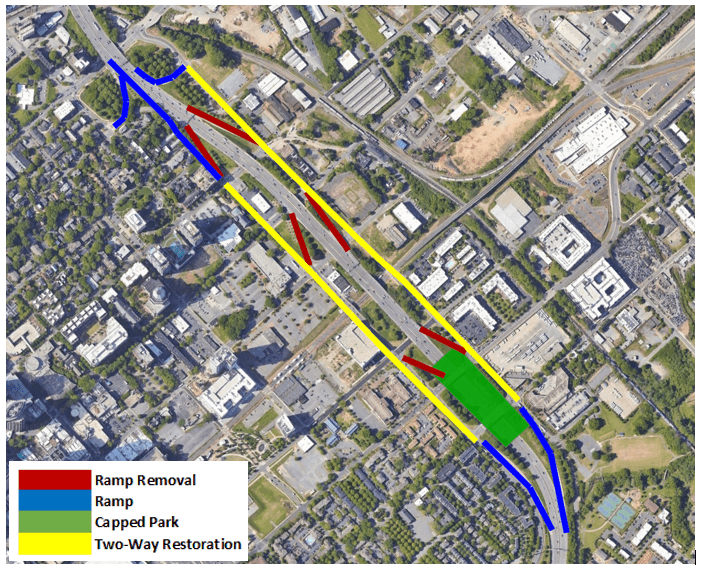
Potential simplification of the Northern segment of I-277 – GoogleEarth
These options may be costly and will take decades to implement, but the future of the region hangs in the balance. There are also steps that can be taken now.
The Congress for New Urbanism (CNU) holds a yearly Freeways Without Futures program which aims at raising awareness to specific highway removal efforts throughout the country. I-277 was submitted for consideration last year but unfortunately was not selected due to not being a full-on movement yet. With the conversation growing, developing, and evolving, the hope is that it will make the 2024 list. CNU’s national convention is also being held in Charlotte this coming year, which would be the perfect showcase for these types of ideas.
Cities such as Oakland, Chattanooga, San Francisco, Rochester, Providence are just a few examples that have had successful highway removal efforts. Minneapolis, Brooklyn, Tampa, St Petersburg, and Durham have ongoing efforts. These cities all have one thing in common: the movement starts from within the community. Advocating to local officials, policy makers, changemakers, and community members, and even just chatting on social media are all effective ways to start these grassroots efforts and hold the key to a successful removal effort for Charlotte.
While it’s impossible to remove the freeway this year, 2023 can be the year that things start to set in motion.
Phil Veasley, EI